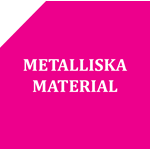Projektinitiativ #19: Integrated Computational Materials Engineering (ICME) approach for Superalloys ( 1 kommentar)
Ni-based superalloys are an alloy that exhibits excellent mechanical strength and resistance to creep at high temperatures, good surface stability and fatigue, resistance to oxidation and hot corrosion. Today's superalloys can also be based on cobalt or nickel-iron. All these kinds of alloys usually contain at least 10 alloying elements, with each one being added for a specific purpose. Due to this complexity in chemistry, it has traditionally taken a long time to optimise properties of existing alloys and to develop completely new alloys.
Sten Wessman presents the initiative during the 2017 conference
Thanks to computational thermodynamics or the so-called CALPHAD technique, it is now possible to perform accurate calculations even for these rather complex alloys, and thereby speed up the development time substantially. Some examples of what can be predicted are e.g. amount of phases at varying temperatures, phase composition and site occupancy within a crystal structure, solvus temperatures, lattice mismatch, densities, microsegregation during solidification, and concurrent nucleation, growth/dissolution and coarsening of precipitates. All of them provide you with a better, more cost effective and faster way to tailor materials chemistry, optimise heat treatment schedules, enable quality assurance and so forth.
The aim of this project is to introduce the ICME methodology and evaluate the power of computational tools based on the CALPHAD technique, and by experimental work validate the simulated predictions on how the microstructure has developed during solidification, joining and/or heat treatments.
Namn Sten Wessman
Organisation Swerea KIMAB
Kommentar #1
Hej från Siemens i Finspång
Mitt namn är Magnus Hasselqvist, och jag sysslar med legeringsutveckling av nickel baserade 'skovelmaterial'.
Vi undersöker f.n. experimentellt hur pass väl olika databaser fungerar map att prediktera solidus, solvus och TCP faser i "vår" del av legeringsrymden, och vilka korrektionsfaktorer man kan använda när man ser avvikelser.
Vi hoppas att de resultat vi tar fram så småningom kan arbetas in i framtida versioner av databaser så att det t,ex, möjliggör bra simuleringar av grundmaterial/ytskikt interdiffusion mha ThermoCalc/DICTRA.
Således är vi mycket intresserade av detta initiativ.
Mvh
Magnus
Namn Magnus Hasselqvist
Organisation Siemens Industrial Turbomachinery AB

